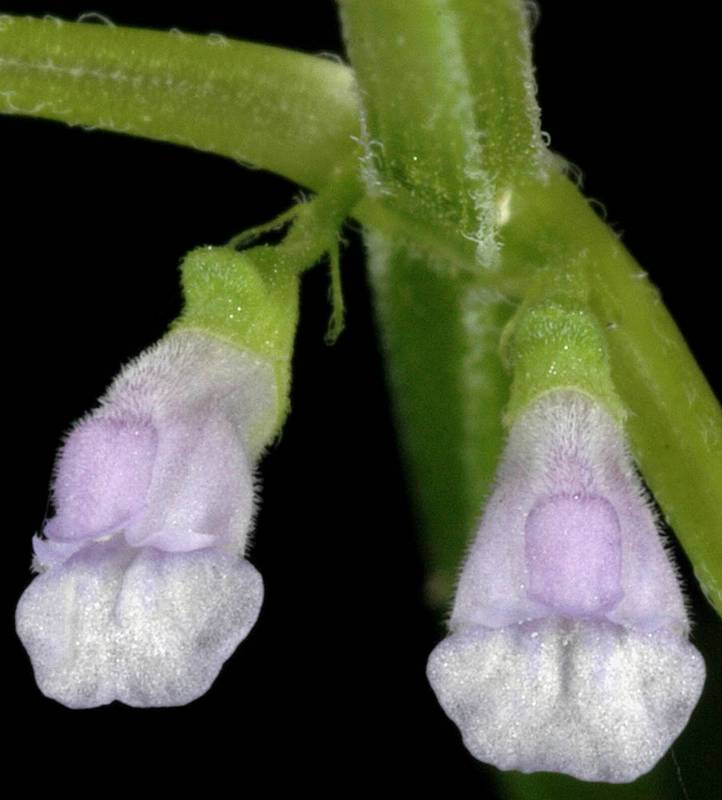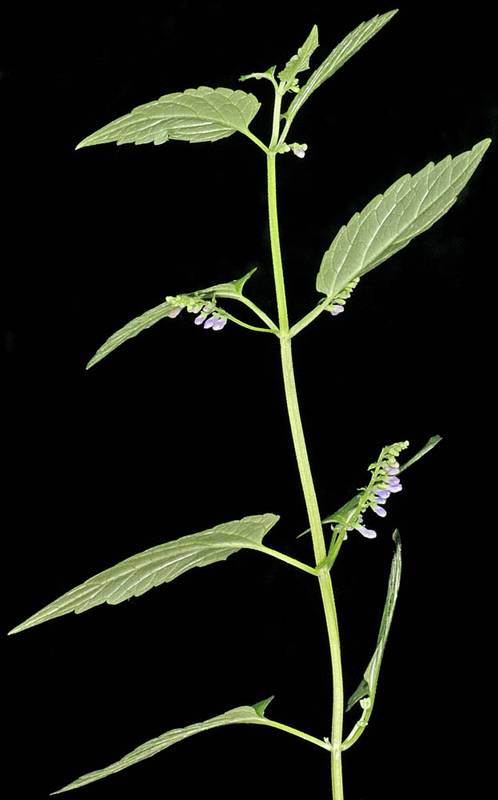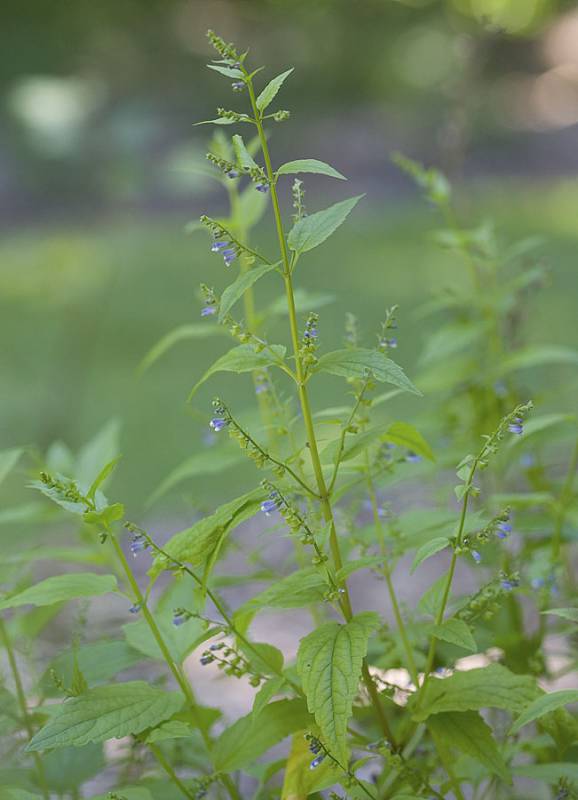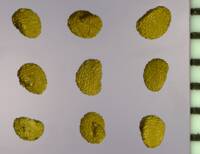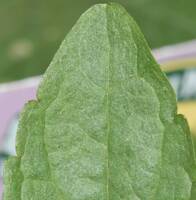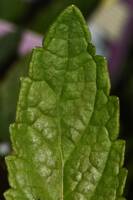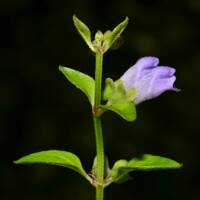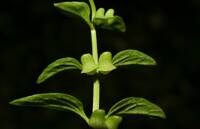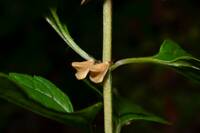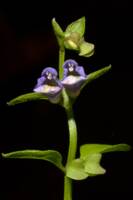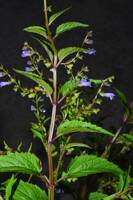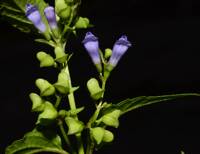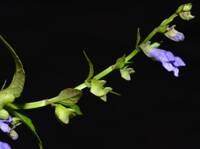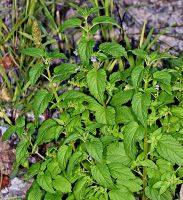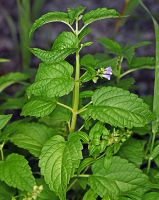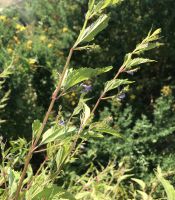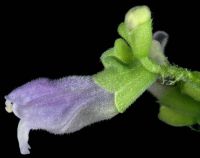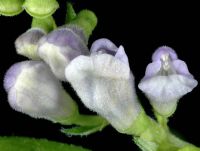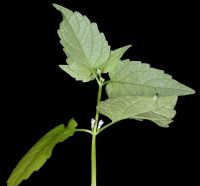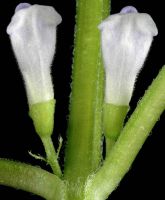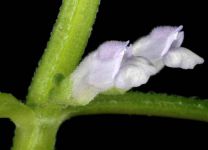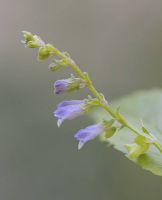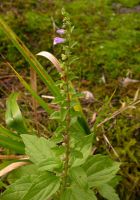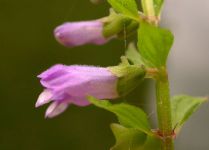Distribution: Occurring on both sides of the Cascades crest in Washington; British Columbia to Alaska, east across much of North America to the Atlantic Coast.
Habitat: Moist bottomlands and meadows, low to moderate elevations.
Flowers: July-September
Origin: Native
Growth Duration: Perennial
Conservation Status: Not of concern
Pollination: Bumblebees, bees, hummingbirds
Perennial herbs from slender, creeping rhizomes, the stems rising singly, 2-8 dm. tall, usually puberulent in lines.
Leaves opposite, petioles 0.5-2.5 cm. long, the blades thin, pinnately veined, mostly glabrous, ovate or lance-ovate, 3-8 cm. long and 1.5-5 cm. wide, with rounded teeth and broadly rounded base.
Flowers in axillary racemes, or terminal on axillary branches, the racemes 2-12 cm. long; calyx two-lipped, the upper lip with a prominent transverse appendage, 1.5-2.5 mm. long; corolla blue, 6-8 mm. long, two-lipped, the short upper lip hood-like, the lower 3-lobed, surpassing the upper lip, the center lobe large, the lateral lobes attached to the upper lip; stamens 4, the lower pair longer than the upper and with one of the pollen sacs abortive; style 2-parted; ovary 2-celled, superior.
Nutlets 4
Publication: Sp. Pl. 2: 598-599. 1753.
PNW Herbaria: Specimen records of Scutellaria lateriflora in the Consortium of Pacific Northwest Herbaria database
WA Flora Checklist: Scutellaria lateriflora checklist entry
OregonFlora: Scutellaria lateriflora information
E-Flora BC: Scutellaria lateriflora atlas page
CalPhotos: Scutellaria lateriflora photos

